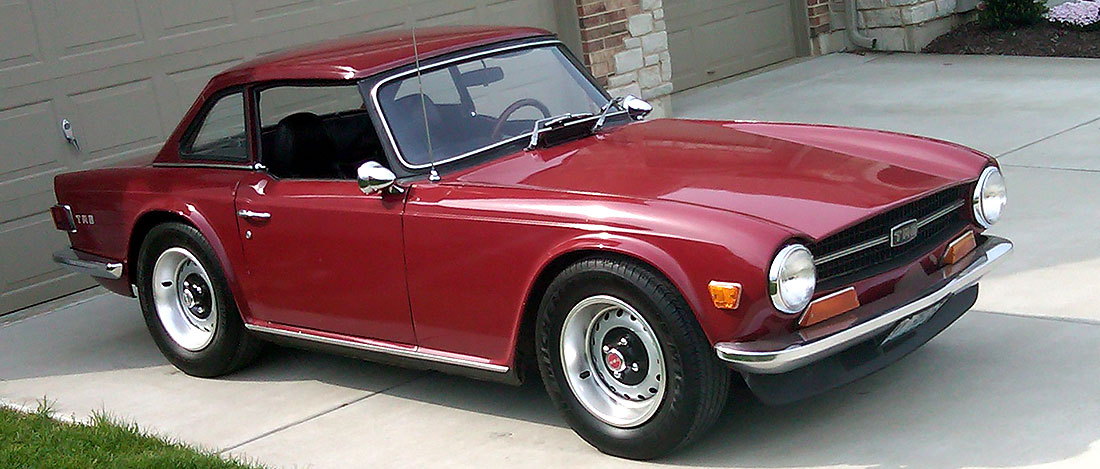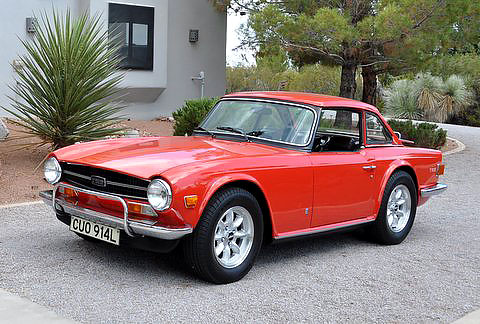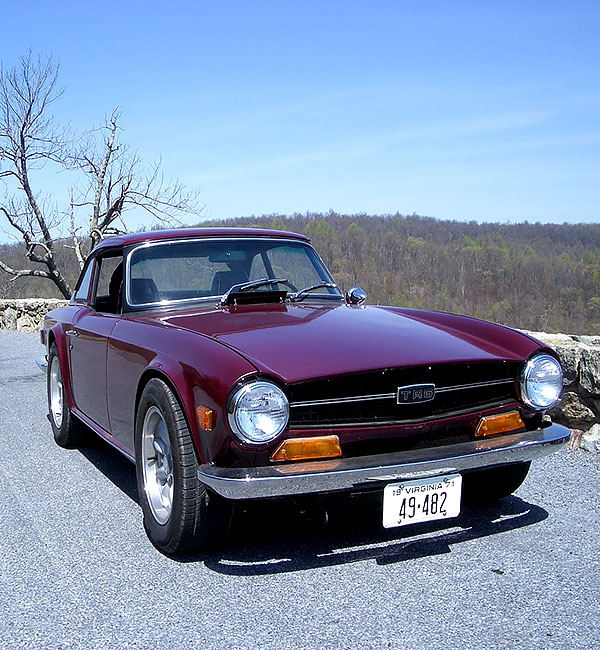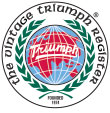
TR6 Hardtop Owner’s Impressions
by Ken Streeter, streeter@www.vtr.org
A common question among TR6 owners each fall as colder weather invades the northern climes is what a TR6 is like with the factory hardtop. As I put together my impressions to answer this question on the Triumphs mailing list , I realized I should put the information together into a web page. This page is the result.
The most noticeable difference in a TR6 with the factory hardtop installed is in the quietness of the ride. The wind noise that is otherwise ever-present, either with the top down or with the soft top erected, is reduced to that more or less approaching a typical car. This makes long drives much less fatiguing (although I maintain it’s nearly impossible to fall asleep with the top down). The only exception to this is that big drops of rain will give the “rain on a tin roof” sound. This doesn’t bother me, as this sound brings back good memories at our family’s summer cabin up in Northern Maine.
The next most noticeable thing is that the car is water-tight. For example, this morning I drove my hardtop TR6 in a hard, driving rain — no water came in, anywhere. The car is significantly warmer, also. I think this is mostly due to air not blowing in around the top edge of the windows, as it does with my soft-top installed. With the double-insulation of the hardtop (steel, and inner headliner), the heat retention is increased somewhat, but this probably isn’t particularly significant. The top seals to the car quite well, and definitely increases the rigidity of the car. Indeed, it is important to firmly attach all six mounting bolts for the hardtop, or it will want to “bang” as the car goes over solid bumps. Installing it tightly is also needed to firmly compress the seals along the windshield frame and rear deck.
The forward and front side visibility isn’t changed at all vs. having the soft top installed. The rear corner visibility is a bit better, since the rear quarter windows are larger, and straight on the hardtop. The rear window is significantly larger than that of the soft-top. However, the size doesn’t make much of a difference from the driver’s perspective — rather, it is the fact that the glass is clear, never clouded as the plastic tends to get over time. I haven’t noticed problems with the rear window fogging up (there is no defogger). I think this is helped by the pair of “air-exit vents” in the rear quarters of the hardtop.
In the above picture, you’ll get a good view of how much larger the rear window is. Personally, I think the hardtop looks quite sharp on the TR6, with the possible exception of the view directly from the rear — from that angle, the rear window seems very large and square, giving a “boxy” look to the car.
I remove the soft top in order to install the hardtop. This provides a surprising amount of extra space behind the seats to put groceries, a small cooler, a backpack, whatever. Even more space is provided vs. the soft-top, since the rear window of the hardtop is “steeper”, giving more “headroom” to the area above the parcel shelf. The rear window also sits back further — the base is actually an inch or so out over the rear deck. I wouldn’t suggest sitting a child back there with the hardtop installed, however, as their head would surely bump against the backglass in an accident.
The soft top can be left installed with the hardtop, but I’m not quite sure how to do this, and appreciate the extra space back there. Installing the hardtop does require two people to lift the top on/off the car, unless you rig up a pulley system of some sort from the roof of your garage. It’s not particularly heavy — my wife is able to manage to assist me in installation and removal. Installation takes about 45 minutes, removal about half of that. Finding a place to store it for the summer can be problematic.
I’m very glad that I have the hardtop for the car. It makes driving it much more enjoyable in the early spring or late fall. However, I do try to put it on as late as possible in the fall — always hoping to get one last “summery day” in October. Actually, the biggest drawback to the hardtop is those spring days when the hardtop is still on, and it is 60F at lunchtime, and I can’t quickly go take that first top-down drive of Spring! (Of course, the fix to this is to have two TR6s, one with the hardtop, and one without — in the Spring I leave the hardtop on the one car quite late, saving the hardtop TR6 for the rainy days, and the soft-top TR6 for the sunny ones…)
If you can find one in good shape for a reasonable price, go for it. I would caution you that it is important that the seals, glass, headliner, and the various fittings come with it. Replacing seals all around will cost at least US $125, and the headliner at least that much, as well. Also, the special brackets that attach the hardtop at the “B-post” are easily lost, and cost about $20 each for replacements. I think that US $500 for an excellent condition hardtop would be a fair price. The biggest problem for getting a hardtop is getting the paint to match the car without repainting both the hardtop and the car…






